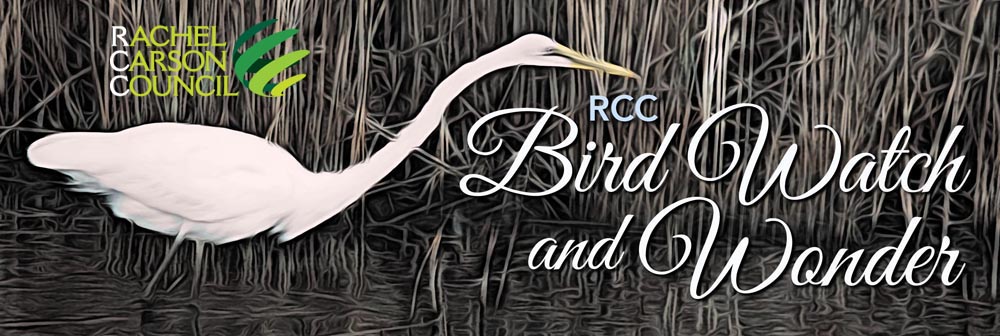 | | | I have always loved the fall, when the summer heat relents and rich colors adorn the hills, and things from birds to butterflies begin to migrate. As I headed south from the coolness of Canada , I stopped to visit and replenish with old friends in Lexington, Massachusetts, Stephen Shick, RCC’s Senior Correspondent, who graces us each week with “Momentary Meditations” and his wife, JoAnn. They were excited to take me and my wife, Caryn, to the new Women’s Monument that honors unsung American women who have fought the good fight and persevered against slavery and segregation, and for women’s rights, education and the environment. 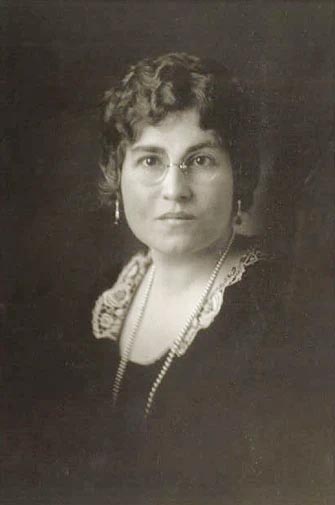 They wanted to show me that Ada Govan, a close friend of Rachel Carson’s, was one of the women honored there. Govan wrote about sharing a sense of wonder for the world around us with children so that they would love the birds, other creatures and other people, and not want to destroy them. Ada Govan’s life and writing deeply influenced Rachel Carson in creating her book, The Sense of Wonder. And so, this September issue of RCC’s Bird Watch and Wonder begins with my own tribute to Ada Govan and Rachel Carson and highlights the wondrous relationship between we humans and the birds. How, as we both navigate a world often made dark and dangerous by manmade chemicals, development, climate change, and war, the birds remind us of the dazzling beauty and perseverance that still persists around us. They help us recall our childhood sense of wonder and that we can and must preserve it. They wanted to show me that Ada Govan, a close friend of Rachel Carson’s, was one of the women honored there. Govan wrote about sharing a sense of wonder for the world around us with children so that they would love the birds, other creatures and other people, and not want to destroy them. Ada Govan’s life and writing deeply influenced Rachel Carson in creating her book, The Sense of Wonder. And so, this September issue of RCC’s Bird Watch and Wonder begins with my own tribute to Ada Govan and Rachel Carson and highlights the wondrous relationship between we humans and the birds. How, as we both navigate a world often made dark and dangerous by manmade chemicals, development, climate change, and war, the birds remind us of the dazzling beauty and perseverance that still persists around us. They help us recall our childhood sense of wonder and that we can and must preserve it.
In “Bird Lore,” Eliza Daley writes how many natural food sources for birds migrating in fall have been paved over or polluted. She now plants her yard entirely with food sources – winterberry, bayberry, dill and coriander – that make it look “less like a garden and more like an abandoned lot.” Or, take a look in “Action and Advocacy” at how the most endangered bird on the continent, the Florida Grasshopper Sparrow, has been saved by human volunteers who have raised, fed and released some 1,000 of them into the remaining prairie-like grasslands near Disney World they need to survive. And, even as sea-levels rise and destroy beaches and habitat, folks like the North Carolina Wildlife Commission and the Army Corps of Engineers have used dredged sand from around Wilmington to restore Sandbag Island, once a critical breeding ground for seabirds. Sandbag had been reduced from an 18-acre island in the 1990s to a barely visible one-tenth of an acre. But as soon as the project was completed, two pairs of American oystercatchers immediately moved in. More will follow. 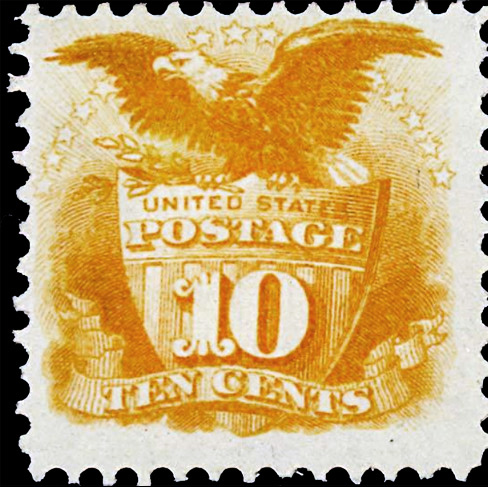 The beauty, endurance and wonder of birds has, of course, inspired human art since at least the days of the Egypt’s sacred ibis. In the United States, as Ross Feldner writes in our section, “The Art of Birds,” paintings of birds have been given wide prominence by the U.S. Postal Service since 1869 with the issuance of a ten-cent stamp bearing an eagle with outstretched wings. Former Audubon Senior Vice President Pete Myers, now publisher of Environmental Health News (EHN), has documented and worked to protect birds and the environment for decades ever since his doctoral dissertation described the reproductive behavior of the Pectoral Sandpiper that migrates each year to its breeding grounds in the Artic. Meyers now wields a camera to reveal and share the breathtaking beauty of the birds that have inspired him over the years. His article and stunning photographs called “Bedlam on the Beach” is from Natural History Magazine and shared by EHN. The beauty, endurance and wonder of birds has, of course, inspired human art since at least the days of the Egypt’s sacred ibis. In the United States, as Ross Feldner writes in our section, “The Art of Birds,” paintings of birds have been given wide prominence by the U.S. Postal Service since 1869 with the issuance of a ten-cent stamp bearing an eagle with outstretched wings. Former Audubon Senior Vice President Pete Myers, now publisher of Environmental Health News (EHN), has documented and worked to protect birds and the environment for decades ever since his doctoral dissertation described the reproductive behavior of the Pectoral Sandpiper that migrates each year to its breeding grounds in the Artic. Meyers now wields a camera to reveal and share the breathtaking beauty of the birds that have inspired him over the years. His article and stunning photographs called “Bedlam on the Beach” is from Natural History Magazine and shared by EHN. 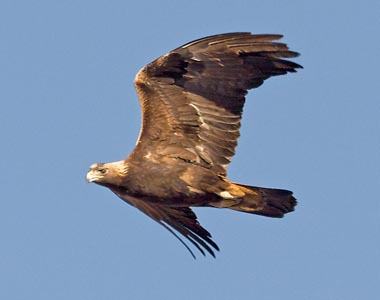 No September issue of Bird Watch and Wonder would be complete without the migration of hawks and how they bring people together in camaraderie and community as they gather in full childlike wonder to ooh and ahh at the raptors overhead. Join Bryan Pfeiffer and his dog Odin atop a mountain in Vermont as they cheer on migrating Broad-winged hawks. No September issue of Bird Watch and Wonder would be complete without the migration of hawks and how they bring people together in camaraderie and community as they gather in full childlike wonder to ooh and ahh at the raptors overhead. Join Bryan Pfeiffer and his dog Odin atop a mountain in Vermont as they cheer on migrating Broad-winged hawks.
We have Ada Govan and Rachel Carson to thank for much of this outpouring of wonder and caring for others. And I was reminded that Ada Govan not only fought off developers to create her woodland sanctuary in Lexington, but that she fought off depression, too, as she turned to banding and enumerating birds. Karl Schmidt, a 63-year-old bird carver who lives in Farmville, Virginia, has a similar story for our day. Schmidt started carving bird decoys with his dad on Eastern Shore Maryland before heading off to college thinking he would never carve again. But a swimming pool accident left him paralyzed and in a wheelchair. Schmidt finally sought solace and refuge in returning to carving duck decoys in 1983, even using power tools clutched in his one partially-usable hand. At first he gave his art away to friends and relatives. But now Karl Schmidt’s carved duck decoys are sold across the United States and Canada. They fill him with a sense of pride and accomplishment. “I never get tired of it,” says Schmidt. “… inside of every block of wood is a duck trying to get out.” | | | | | | | | 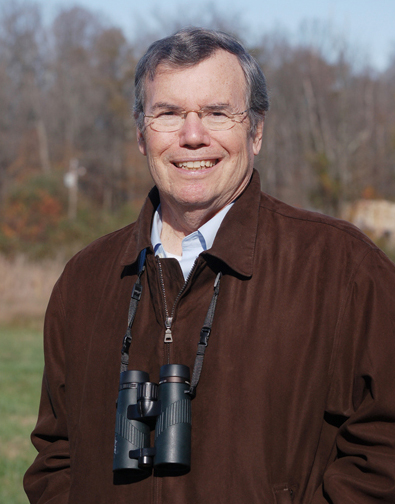 Bob Musil is the President & CEO of the Rachel Carson Council and author of Rachel Carson and Her Sisters: Extraordinary Women Who Have Shaped America’s Environment (Rutgers, 2016) and Washington in Spring: A Nature Journal for a Changing Capital (Bartleby, 2016). He is also the editor of the forthcoming annotated edition from Rutgers University Press of Rachel Carson’s Under the Sea-Wind with his Introduction, updated marine science, and historic and contemporary illustrations and photographs. Bob Musil is the President & CEO of the Rachel Carson Council and author of Rachel Carson and Her Sisters: Extraordinary Women Who Have Shaped America’s Environment (Rutgers, 2016) and Washington in Spring: A Nature Journal for a Changing Capital (Bartleby, 2016). He is also the editor of the forthcoming annotated edition from Rutgers University Press of Rachel Carson’s Under the Sea-Wind with his Introduction, updated marine science, and historic and contemporary illustrations and photographs. | | | | | | Ada Govan, Rachel Carson and the Wonder of Birds A revolution in the way we perceive and respond to today’s world was started by two women, one of whom is now enshrined on the Women’s Monument on the Lexington green where the first shots of the American Revolution were fired. Ada Govan, a close friend of Rachel Carson and author of Wings at My Window was a noted bird bander and expert who created the 12-acre Woodland Bird Sanctuary around her home after her successful fight to save the woods from developers. | | | | | | | | Feeding the Birds This time of year, when the day starts dark with fog and ends in warm sunshine, the birds are starting to think about migration. In days when we still had swallows, they were already leaving in late August. After a summer of darting jet arrowheads swooping and looping over the garden, we’d wake to quiet skies and feel a little heartbreak at the loss. But we were fortified by the knowledge that they’d return with the spring to suck all the biting bugs from the skies. Until they didn’t. | | | | | | | | Why Seagulls Don’t Want Your Chips as Much as You Might Think Have you been to the beach this summer? I took my daughter there the other day and got her a pasty for lunch. She was happily munching it while staring out to sea, back turned to the café where we bought the pasty. Suddenly, there was a flapping of wings behind us and something swooping down. Next thing I knew the pasty was gone, and my daughter was in tears. A seagull had struck and flown off with a free lunch, again. | | | | | | | | Suwannee 22: Ridin’ Out the Storm The folks at the Avian Research and Conservation Institute (ARCI) in Gainesville, Florida, have spent the past two decades or so attaching electronic monitoring devices to birds in the Southeast, but primarily in the Sunshine State. In doing so, they have gained invaluable insights into the way certain species behave, particularly in migration. One of their big focuses is on swallow-tailed kites, which migrate from the Florida peninsula down to South America at the end of summer. | | | | | | | | Hawkwatching My pup Odin and I will be atop a mountain in Vermont today enjoying (and counting) migrating raptors, mostly Broad-winged Hawks this early in the autumn flight. Partly science and partly social, hawkwatches are entirely wonderful. Park yourself at a known migration spot and watch the predators drift past southbound, sometimes by the thousands or tens of thousands. Even if you don’t know a “redtail” from a “sharpie,” hawkwatches usually draw small crowds of birders who will help you see and understand what’s flying (including Monarch butterflies and migrating dragonflies). | | | | | | | | The Hidden Value of Vultures Researchers believe a massive die-off of the birds led to over 100,000 additional human deaths per year in India. Vultures are nature’s underappreciated essential workers. Even Charles Darwin, who wrote a dissertation on the lowly earthworm, reportedly called a vulture he saw during his famous voyage on the HMS Beagle “disgusting.” Their reputation has not drastically improved since. An association with death and featherless faces that few would call beautiful have made vultures among the least loved animals on the planet. | | | | | | | | | | Hope for North America’s Most Endangered Bird On a recent morning, 10 Florida grasshopper sparrows, tiny brown-speckled birds that are the most endangered on the continent, took their first scampers and flaps on the state’s central prairie. It happened so fast it was hard to distinguish which of the captive-raised sparrows was the 1,000th released on this expanse of grasslands not far from Walt Disney World, the only place on Earth where the birds are found in their natural habitat. | | | | | | | | Cape Lookout Dredge Spoils Used to Restore Vanishing Island A near-vanished island popping up from the channel between the Cape Lookout Lighthouse and Harkers Island has been restored, offering itself once again as a haven for waterbirds. Around since at least 1970, Sandbag Island is a human-made, dredge spoil island built up by the sand, mud and other material scooped and sucked up from clogged waterways. The island, owned and managed by the North Carolina Wildlife Resources Commission sprawled as large as 18 acres in the late 1990s. | | | | | | | | At Events Like Ours: Five Years of Black Birders Week As the popular event reaches its fifth year, the movement has enjoyed growing acceptance. But some progress remains slow. A gentle northward breeze blew off Long Island Sound, cooling the morning air in the amphitheater of Seaside Park in Bridgeport, Connecticut. Out beyond the pond, people started to filter in past foraging starlings and grackles. As they entered the park, they walked under the massive communal nests of our local Monk Parakeets. | | | | | | | | Eight Great Reasons to Love the Migratory Bird Stamp Not just for hunters, the Duck Stamp has raised more than $1 billion for conservation, helped birds from Buffleheads to Bobolinks, and created a wealth of fine art in the process. Buying a Duck Stamp is a positive conservation action any birder can take. Among the U.S.’s many spectacular federal and state lands, it pays to remember the wildlife havens that are the National Wildlife Refuge system, administered by the U.S. Fish and Wildlife Service. | | | | | | | | Northerly Winds Help Millions of Birds Migrate South A gusty northerly wind has blown in some cooler and less humid air into Tennessee and Kentucky. Along with cooler temperatures, the north wind is helping birds migrate south for winter. According to Laura Cook, the bird research coordinator at Warner Parks and Nature Center over 200 million birds will be migrating south Tuesday night, with three million birds expected to fly over Davidson County. | | | | | | | | Revised Plan Provides a Framework to Balance Solar Development and Conservation on Public Lands Today the Bureau of Land Management (BLM) released the latest version of the Western Solar Plan, which will determine where and how utility-scale PV solar is sited and permitted on public lands across 11 states. "More than 300 species of birds use America’s public lands during their life cycle, and many of them face significant range loss and extinction unless we combat the climate crisis with a rapid development of clean energy. | | | | | | | | A New Study Reveals Migration Isn’t a Solo Affair—It’s the Social Event of the Season Migrants face myriad challenges. That's why certain songbird species choose to travel (and possibly even work) together, according to research drawing on a trove of bird banding records. For songbirds, migration is the most difficult time of year. As they pass through thousands of miles of varied terrain, migrants must navigate a host of threats while urgently searching for habitat where they can rest and refuel. | | | | | | | | Birds Are Shifting More in Time Than Space as They Adjust to Global Warming, Shows Study As North America heats up due to climate change, animals are responding in three primary ways: moving north, heading to higher elevations and making phenological changes—adjusting annual cycles such as when they breed. A new UCLA study analyzed 27 years of data across 311 land-based species to examine how North American birds have responded simultaneously using all three methods. | | | | | | | | “Beautiful Paintings of Beautiful Birds” The first United States bird stamp, depicting an eagle with wings outspread, was issued in 1869 for general mail usage. The next eagle stamp was issued in 1911. Since then there have been numerous U.S. stamps depicting birds, especially for air mail. Through the following decades scores of stamps with birds on them were issued. But this story actually began in 1978 when wildlife artists Arthur and Alan Singer were commissioned to create 50 original paintings of state birds and flowers. | | | | | | | | Bedlam on the Beach Atmospheric river after atmospheric river—nine in just a few weeks—drenched California from late December 2022 to mid-January 2023. After the barrage, at Point Reyes National Seashore, forty-five miles north of San Francisco, a large concentration of shorebirds gathered at dawn, having been flushed out from nearby mudflats onto Limantour Beach, which had been ravaged by high waves and high tides. The impact was so severe that for several miles the contour of the beach, and presumably the distribution of the invertebrates upon which shorebirds feed, had been massively changed. | | | | | | | | This Teen Photographer Captured a Raptor Rarity: Bald Eagles Raising a Red-tailed Hawk Chick Fresh off a win in the Audubon Photography Awards, Parham Pourahmad shares how his fast-growing passion for photographing wildlife led him to document the unusual avian adoption. Parham Pourahmad is always on the lookout for fascinating wildlife behavior to photograph. So, when he got wind of a Red-tailed Hawk fledgling that ended up in a Bald Eagle nest 45 minutes from his California home, he knew it was a moment he had to capture. | | | | | | | | Woodcarving Project Goes Global: Karl Schmidt Shares His Hobby When he started, Karl Schmidt had no idea how far his woodcarving hobby would go. But now, the 63-year-old Farmville resident's work has found homes across Virg inia, all along the Eastern Seaboard and even across the border in Canada. Schmidt's passion for woodcarving has early roots in his childhood hunting trips with his father in Maryland along the Nanjemoy and Potomac River in the 1970's. Schmidt and his father used wooden decoys and began repairing decoys for nearby farmers who let them hunt on their land. | | | | | | | | Avian Architecture: How Birds Design, Engineer, and Build Peter Goodfellow 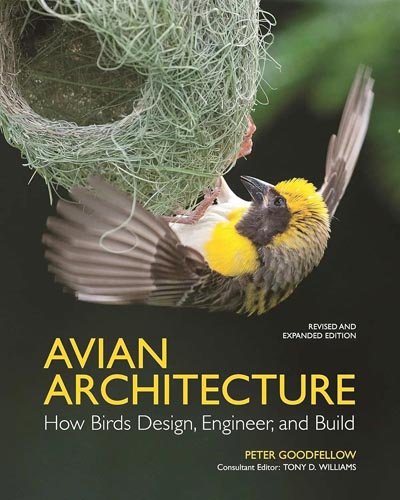 The essential illustrated guide to how birds design and build their nests—now fully revised and expanded! The essential illustrated guide to how birds design and build their nests—now fully revised and expanded!
Birds are the most consistently inventive builders, and their nests set the bar for functional design in nature. Describing how birds design, engineer, and build their nests, Avian Architecture deconstructs all types of nests found around the world using architectural blueprints and detailed descriptions of the construction processes and engineering techniques birds use.
This spectacularly illustrated book features more than 300 full-color images and more than 40 case studies that profile key species worldwide. Each chapter covers a different type of nest, from tunnel nests and mound nests to floating nests, hanging nests, woven nests, and even multiple-nest avian cities. Other kinds of avian construction—such as bowers and food stores—are also featured. Now with more case studies and an updated foreword, this revised and expanded edition includes intricate step-by-step sequences, visual spreads on nest-building materials and methods, and insightful commentary by a leading expert. - Illustrates how birds around the world design, engineer, and build their nests
- Features architectural blueprints, step-by-step sequences, visual spreads on nest-building materials and methods, and expert commentary
- Includes more than 300 full-color images
- Covers more than 100 bird species worldwide
“The author’s interest is contagious and will leave readers inspired to discover and admire bird nests in the wild.”—Sabrina S. Taylor, Journal of Field Ornithology. Click here to purchase | | | | | | | | | | Cactus Wren This “giant” wren lives in the deserts of the southwestern United States and is well adapted to its environment. It can survive without any free water. Eating cactus fruits is an important source of water along with a diet of insects and certain plants. Cactus Wrens serve as pollinators, sipping nectar from saguaro blossoms and eating insects trapped within. The Cactus Wren is not much of a flyer and usually forages on the ground, turning over leaves and other objects in search of food. | | | | | | | | Momentary Meditations are published every Monday to awaken what Rachel Carson called “the sense of wonder” and what Albert Schweitzer called “a reverence for life.” Looking deeply into our interdependence with all life on earth helps us know what we must do. In our harried world, these meditations are meant to serve as a renewable resource for compassion and love. Returning - Year after year, we return to southern New Jersey to be with family. Here, on a Cape May beach, a Black-headed gull rejoins its family to sit, like we do, with our backs to the land and feel the rhythm of our returning. | | | | | | | | Birding Festivals and Events A great way to enjoy birdwatching is by going to festivals—they’re organized to get you to well-known birding spots at the right time of year, and they’re a perfect way to meet people. Experts and locals help you see more birds, and you’ll meet other visitors who share your hobby. While you’re there, keep an eye out for Cornell Lab representatives, as we do attend several festivals each year. | | | | | | | | The September 2024 issue of Bird Watch and Wonder was produced by Ross Feldner | | | | | |  The Rachel Carson Council Depends on Tax-deductible Gifts From Concerned Individuals Like You. Please Help If You can. The Rachel Carson Council Depends on Tax-deductible Gifts From Concerned Individuals Like You. Please Help If You can. | | | |  Sign Up Here to Receive the RCC E-News and Other RCC Newsletters, Information and Alerts. Sign Up Here to Receive the RCC E-News and Other RCC Newsletters, Information and Alerts. | | | | | | | | | | | |